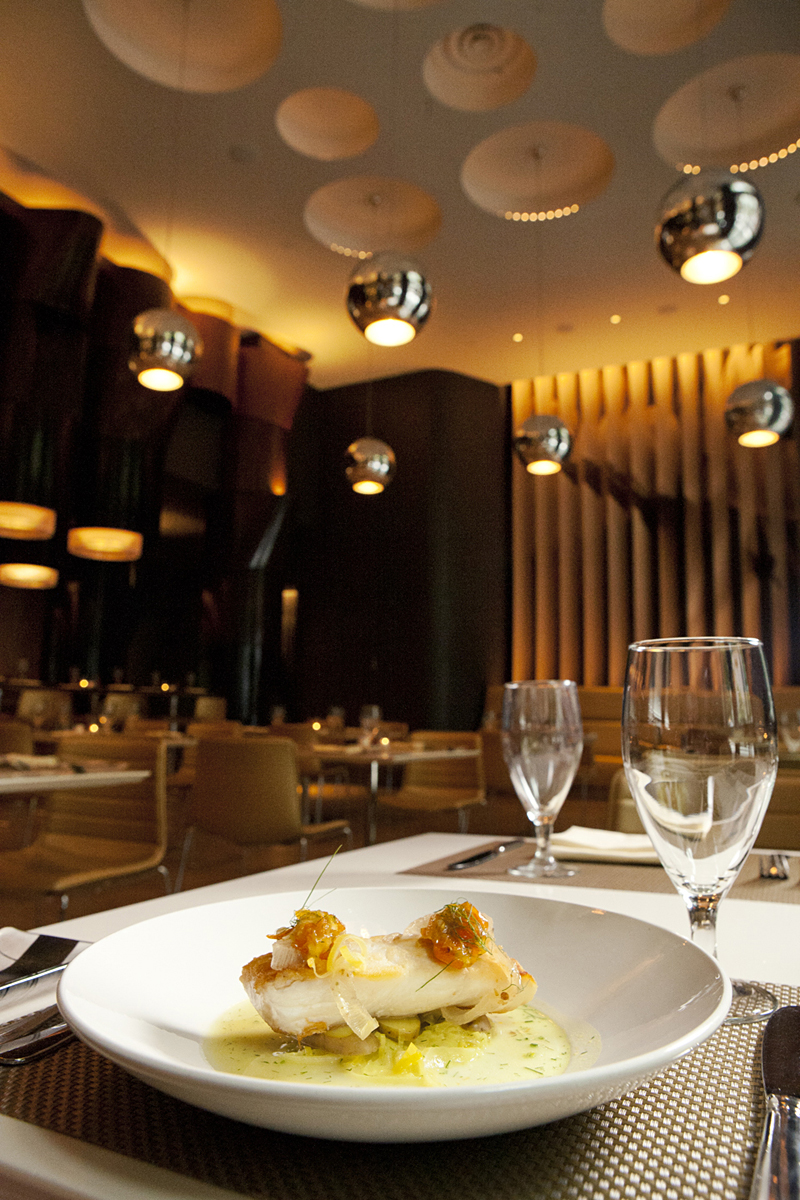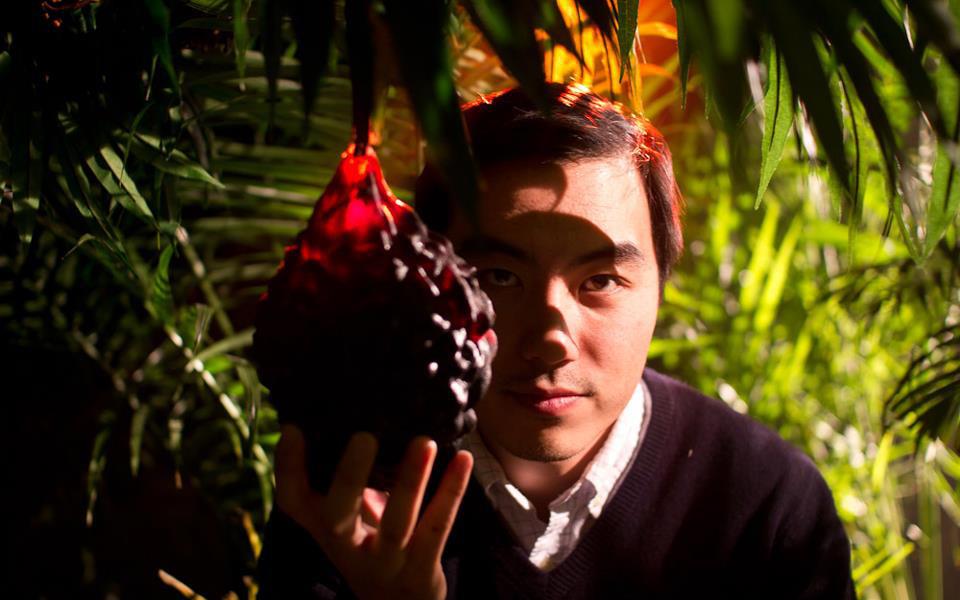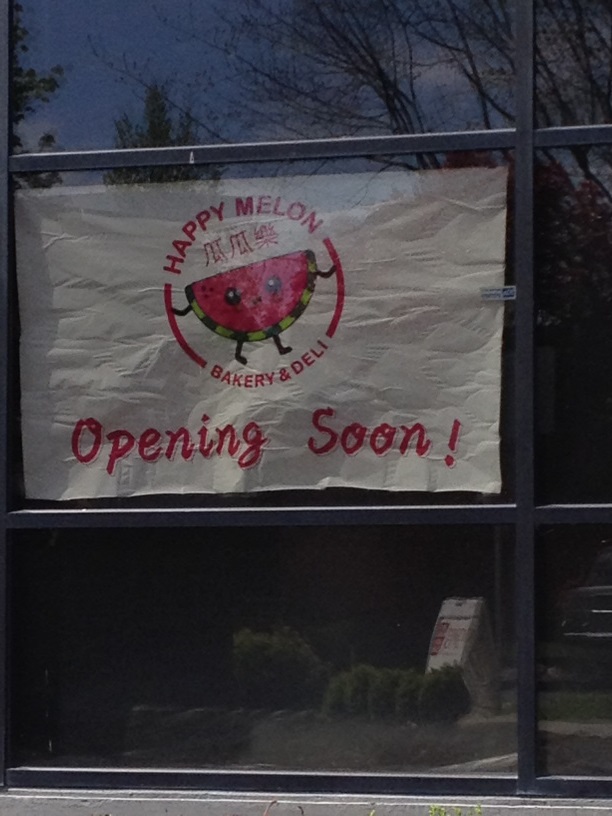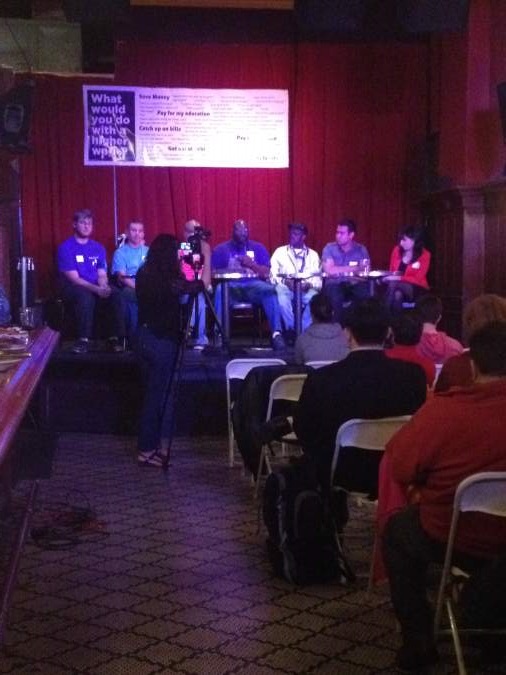If coal miners or biochemists were asked to imagine the kind of restaurant in which food critics spend most of their time, they’d probably visualize a dining room much like the one at Trace. Then they’d probably snicker.
This spring, Trace opened on the hallowed ground floor of downtown Seattle’s W Hotel, where Earth and Ocean had incubated the careers of such notable Seattle culinary talents as John Sundstrom (Lark), Maria Hines (Tilth, Golden Beetle), and Dana Tough and Brian McCracken (Spur Gastropub, Tavern Law, The Coterie Room). And while a months-long renovation process and the involvement of Portland’s Skylab Design Group—a firm with a reputation for building hip and green—would seem to guarantee a modicum of modernity, the obstreperously sleek space comes across as a caricature of upscale dining. With its soaring ceiling and sci-fi touches, the restaurant looks like a meeting place for lovers on The Young and the Restless circa 1996.
The flooring planks and tables are made from beige wood, but the metal chairs are upholstered in a ridged gold fabric that could have been cut from the same bolt used for sewing Star Trek uniforms. There are silver globes and internally lit white ellipsoids suspended above the main dining room; walls padded with crimped white acoustical tiles; and a sushi-bar alcove set off by gleaming onyx columnar tubes that hover overhead. You don’t need to check the menu to know you’re not getting out of here cheaply.
Diners at Trace have plenty of time to absorb their surroundings, because service is far from snappy. At a recent weekday lunch, when only three of the room’s 21 tables were occupied, seven minutes elapsed before a staffer approached my table. Seven minutes may not sound like an unbearable stretch, but it’s hardly pocket change. If you read at an average pace, it should take you fewer than seven minutes to read this column from top to bottom—and that includes breaks to scan ads on the opposite page. I was dining alone, so waiting seven minutes to have my water glass filled wasn’t a terrible inconvenience. But if I were on my way to the airport, as were the men at a table near mine, I’d have been annoyed. If I’d been entertaining a business client, as the woman dining to my right appeared to be doing, I’d have been embarrassed.
The food served at Trace is on the right side of decent, with a few dishes succeeding admirably. But the consistently clunky service and overwrought decor detract mightily from the overall experience, which has to be doubly good to assuage local diners’ doubts. Hotels have consciously spiffed up their restaurants in recent years, but if the genre’s in the throes of a full-fledged renaissance, Trace isn’t evidence of it.
Trace’s service problems start at the bar, which sometimes operates as a pseudo-host stand for a restaurant which desperately needs a functional one. Upon entering the hotel, prospective diners are thrust into a fray of corporate nomads, seated on couches with plates of sliders balanced on their laps and pint glasses in their hands. But the proper dining room beyond the post–happy hour scrum was completely deserted both times I visited for dinner, which—to put a positive spin on it—meant no mere employee was going to stop me from sitting anywhere I pleased.
A server finally showed up several minutes after my guest and I had decided Trace was running on a plop-yourself-down system. “Will this table work for you guys?” she asked, gesturing toward the table at which we were seated.
The sense that Trace has lost the beat is perpetuated by its dual menus: one lists the dishes prepared by chef Steven Ariel, the other the sushi bar’s offerings. (Confusingly, if you order omakase—a Japanese term used to indicate you’re deferring food choices to the sushi chef—you only get dishes from Ariel’s kitchen.) The arrangement led me to wonder if two high-ranking execs couldn’t agree on a concept for the restaurant, since the menus aren’t remotely complementary. Surely nobody really wants a roll with eel, cucumber, and miso sauce followed by a roasted chicken breast with mascarpone ravioli and prosciutto.
Unlike the staffers on the floor, Trace’s sushi chefs are confident and attentive, but sushi is still the restaurant’s weaker half. How can a restaurant screw up edamame? Trace parries that usually rhetorical question with puny pods that taste as though they hadn’t been fully defrosted before being doused with too much chili sauce. The sushi bar traffics mostly in rolls—”You guys really like the nigiri!” a chef exclaimed after we ordered a third variety of fish over rice—and prepares them in slightly stingy fashion. The signature Trace roll of Dungeness crab and spicy tuna, for instance, was overloaded with chives.
A sushi bar can’t win by trying to keep down costs, which might be the motivation for laying the chives on thickly and stocking suboptimal seafood. Trace’s salmon, likely the fish that attracts the most interest from out-of-towners, was meaty and muscular, but the tuna was stringy and the mackerel bland. Meanwhile, flavorless shrimp were tooth-achingly cold.
There are blips on the kitchen menu, too. A charcuterie board’s charms are undermined by greasy prosciutto and an overly peppery coppa. The jagged cubes of ice in a comely chilled soup, with interlocking crescents of puréed cucumber and tomato, made for treacherous eating. And a lovely Caesar graced with radish discs and fat white anchovies would have been much better without the intrusive hunks of supremely rich pork belly.
But tucked among the disappointments and the buzzwords printed along the menu’s bottom edge (“farmed, foraged, crafted, hunted, shared”) are a few terrific finds. Braised beef and peas served over wide saffron-scented noodles—a dish that seems designed to assure hardened carnivores that it’s OK to dine in a restaurant with a sushi bar—is a hearty stew of warming flavors. Beef also has a strong showing on Trace’s steak plate, featuring an espresso-charged sauce and delicate enoki mushrooms. Other “farmed and foraged” triumphs include a salad of capably cut beets and oranges atop a rough road of crushed hazelnuts.
The very best dish at Trace is a crusty roasted halibut, afloat in a leek nage speckled with fennel. The fish tingles with the bright tones of preserved kumquats. The entrée is everything the restaurant isn’t: lively, organized, and satisfying. It’s funny that Trace’s lengthy mission statement doesn’t include the verb “fished”; perhaps if it took more inspiration from Seattle’s watery environs instead of a Portland architecture outfit, it might stand a chance of drawing diners who don’t intend to spend the night.
Price Guide
Cucumber soup $16
Beet salad $9
Steak $28
Halibut $26
Edamame $5
Trace roll $18








